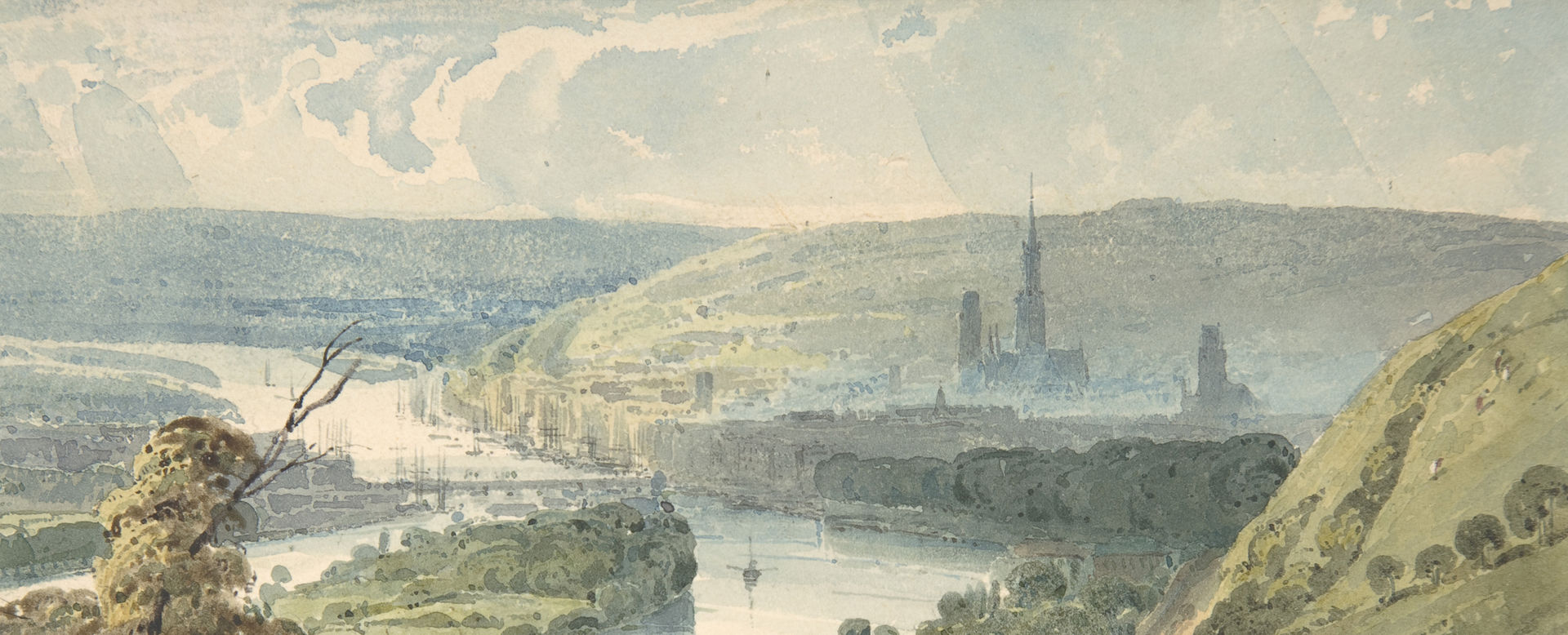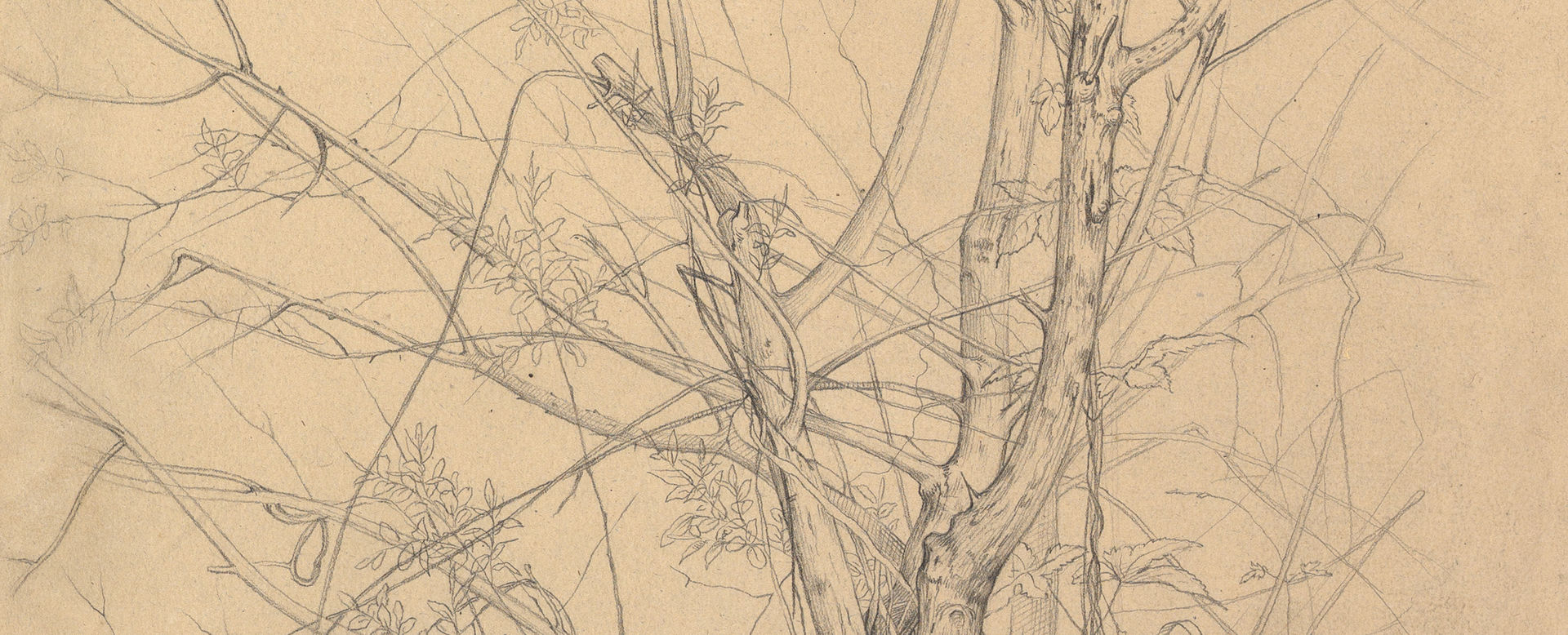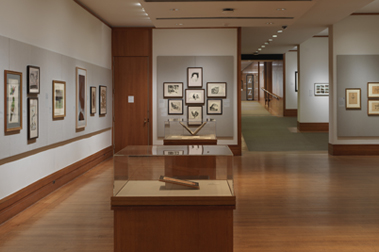Design for a Haircomb with a Bundle of Iridescent White Flowers and Three Red Stones
Anonymous, French, 19th century French
Not on view
Drawing with a design for a haircomb, designed around 1900, part of an album of drawings by various artists for individual pieces of jewelry, containing a variety of designs in the Art Nouveau style of the late nineteenth and early twentieth century, as well as some pieces in historic period styles. The haircomb in this drawing consists of four golden teeth that scroll on the upper ends, joined by a slightly curved horizontal strip, with diagoal rope motifs interlacing around the intersections between the comb teeth and the horizontal strip. Three small, oval stones decorate the spaces on the horizontal strip between the comb teeth, with a small, white dot to suggest a certain shine or iridescence in their material. From under the horizontal strip, between the two central comb teeth, scrolls upwards a green stem with two large, stylized leaves, colored with shades of green and brown, which stand over the sides, and a large bundle of stylized flowers with four petals, colored with purple and white to suggest an iridescent, purplish-white surface, bordered with golden outlines executed with metallic paint, and with small, white round pearls as pistils, and smaller, greenish flowers of similar shape. This design reveals the aesthetic of late Art Nouveau jewelry style, designed, among others, by Rene Lalique, which drew inspiration from antiquity and japonism, abandoning the exclusive use traditional precious stones in the manufacture of jewels, and using, instead, a combination of gold, gemstones, semi-precious stones, mother-of-pearl, ivory and horn, enamel, and glass, to create colorful, powerful, and sinuous designs, often presenting animal and other figurative motifs. Some traces of graphite appear under the comb, possibly suggesting measurements for proportions. Another sketch appears on the right side of the sheet, suggesting a curved motif that might have been tested for the shapes of the teeth. A small, abstract sketch, drawn with a very soft hand and almost invisible to the eye, is on the left-bottom corner of the sheet.



